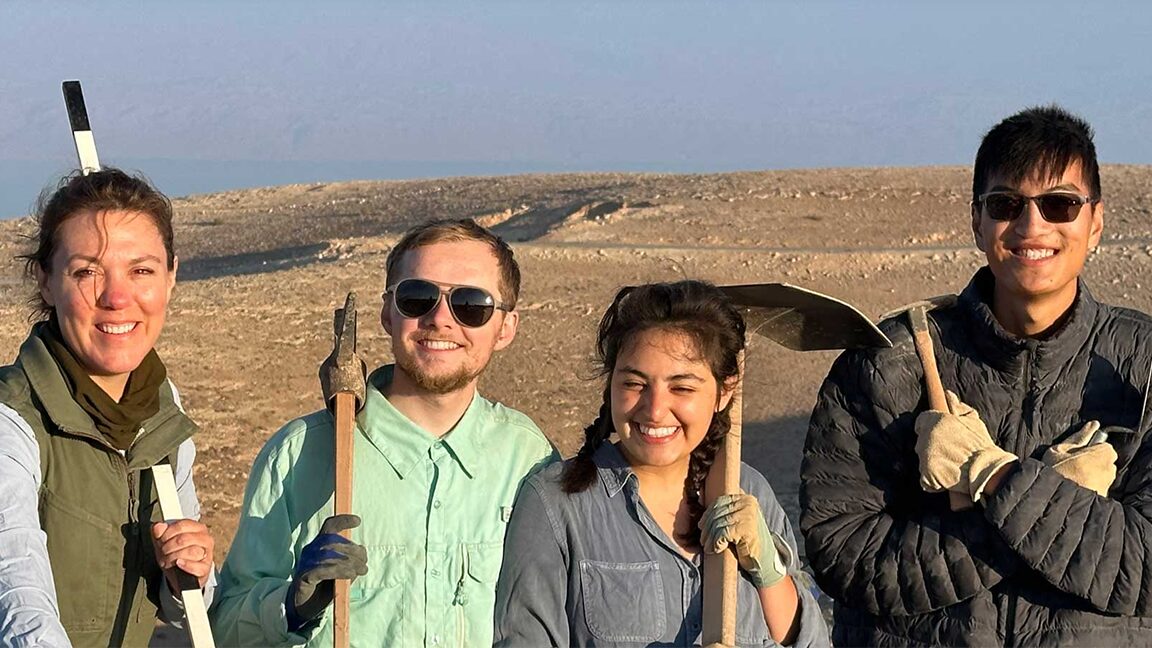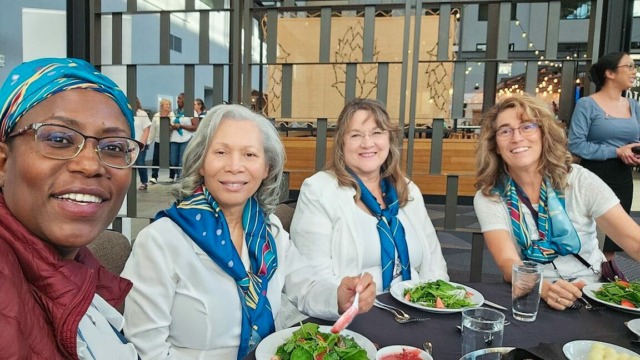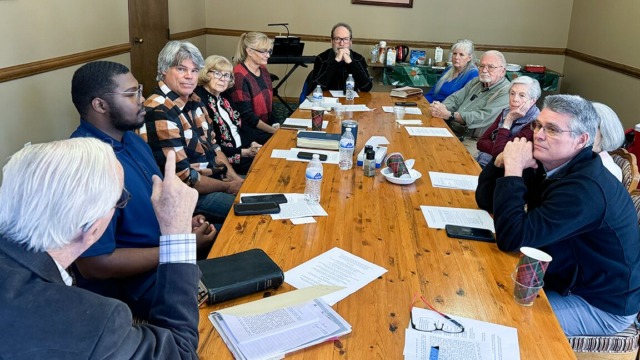UAU News – Lincoln, Nebraska … This summer, three theology majors traveled halfway around the world and a few thousand years into the past. Payton Arnett, Albany Santeliz Diaz and Marcus McConaghy joined Dr. Trisha Broy, assistant professor of religion, on an archeological dig in Jordan.
Broy has participated in digs in Jordan, Sicily and Tennessee for more than 25 years, and earned her doctorate in ancient Near Eastern studies and biblical archaeology from Andrews University, which sponsors this excavation in Jordan. This was the first time she had been able to bring students from Union Adventist University with her.
“I thoroughly enjoyed having Union students participating this season,” Broy said. “It was so joyful and energizing to witness their enthusiasm and excitement as they experienced this part of the world for the first time. Not only were they exploring the ancient biblical world, they were encountering a rich present-day culture that was almost entirely new to them.”
“Several times on our trip, a student told me they had learned about a concept in my class, but now they’ve seen it play out in a real-life situation and understand it much better,” Broy continued. “For example, some social values in the biblical world, such as collectivism, are very foreign to our individualistic culture, but very alive today in Jordan, where family honor and patriarchal responsibility are active social concepts.”
Santeliz Diaz expressed her appreciation for the cross-cultural out-of-the-classroom experience. “Despite language and cultural barriers, God’s created people are everywhere you go; there is always some connection to be found between me and any given person in the world,” she said. “God is with us everywhere. I saw God on this trip through the welcoming attitude and love of the people of Jordan, and the people we dug with, as well as in the beauty of seeing and working with ancient places and artifacts from the time of the Bible.”
According to Arnett, the experience gave him a more complete picture of Bible stories. “I have become much more knowledgeable about archaeology and the geography of the Bible,” he said. “As I read the Bible now, I can picture views of locations and the distances between them in a powerful way. As a future pastor, my sermons will be all the deeper after this trip!”
High on a hill overlooking the Jordan Valley, the dig site afforded beautiful views of both the Dead Sea and Jericho on the far side of the valley. Khirbet Safra, as the location is now known, was inhabited from the 13th century BCE to the mid-ninth century BCE, which correlates to the period of the books of Judges, Ruth and First and Second Samuel in the biblical timeline. Khirbet Safra means “yellow ruins” in Arabic, and no one knows the name of the fortified iron age settlement that once stood on the hilltop. During this time period, Moabites, Ammonites, and Amorites all lived in the area.
Working alongside students and faculty from Andrews University, the Union contingent was divided between two fields in the ancient settlement. McConaghy worked in Field A under the direction of Dr. Constance Gane, an associate research professor of biblical archaeology at Andrews, where they unearthed the earliest period floor of a building attached to the western wall as well as opening a door that had been blocked by falling debris after the building was abandoned. Arnett and Santeliz Diaz worked under Broy’s direction in Field C, focusing on the excavation of a house on the southeast side of the town. Their discoveries included an ashpit and curious set of four paired circular structures they are still working to interpret.
In addition to uncovering ancient architecture, in both fields the Union students found interesting items of everyday life, such as cooking pots, storage jars, a shell necklace, a bronze cloak pin (the point is still sharp), grain processing equipment such as stone pounders, grinders, mortars and pestles, and objects for fabric creation like spindle whorls, spindle rests, a shuttlecock and a bronze needle.
“There is an incomparable thrill that comes from unearthing something that a real person made and used more than 3000 years ago,” Broy explained “We were uncovering the floor of a house that was abandoned thousands of years ago and seeing the remnants of average lives. On a tour of Biblical sites, you just walk around and look, but during an excavation, you do a deep dive into one focused point in history.”
Spending mornings at the dig left afternoons open for tours of local sites of historic interest including the Jordan River, Petra, Jerash, Gadara and seeing the Sea of Galilee, Machaerus, “Noah’s Tomb” in Kerak, and the mosaics of Madaba. For Broy, the high point of the tourist aspect of their trip was seeing her students swim in the Dead Sea. “No matter how much you tell people what to expect when they go, all first-timers are astounded by the experience,” she said.
For McConaghy, the best part of the trip was getting to know the master’s students from Andrews. One was moving from a career in nursing to ministry, and another was a former civil engineer. “I really enjoyed talking with the grad students who had taken very different career paths, but God had led to ministry,” he said. “They could have been making much more money, but were finding fulfillment through the Holy Spirit instead.”
For Arnett and Santaliz Diaz, who have been dating for a couple of years, the moment that stands out the most happened atop Mt. Nebo where Moses once stood. “Overlooking the Promised Land from Mt. Nebo, it was a perfect moment,” Arnett said. On one knee, he proposed to Santaliz Diaz. She said “yes.”
The entire group was glad they had said yes to this opportunity to touch and experience history. “Theology students pick apart ancient civilizations layer by layer in books, but it’s cool to do it in real life,” McConaghy said.
“This opportunity was even better than I could have imagined,” said Arnett. “Not only to go, but to be a part of digging in the dirt every day was amazing.”
“Participating in biblical archaeology educates the Christian about the biblical context in an experiential way, beyond what can be learned from a distance,” Broy said. “It causes one to directly encounter the environment and culture of the period, which naturally leads to deeper personal connections with Scripture. It draws you back to the Bible and helps you to notice and understand things that you passed over before.”
—Union Adventist University News. Republished with permission from the Union Adventist University News website, July 29, 2025, article. Photo supplied.




